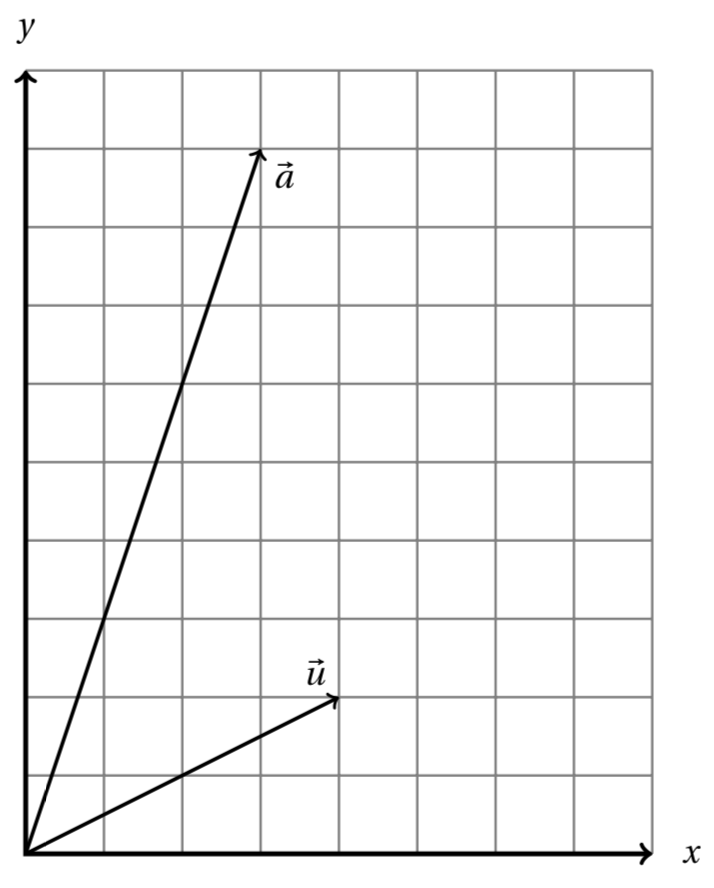Section 31 Worksheets
Subsection 31.1 About Worksheets
This is a section full of worksheets. Each is a division of its own, via the <worksheet> element. This is a necessary initial <subsection> to the current <section>, since we will have multiple worksheets. In practice you might want to rip out all the worksheets of an entire book and bundle them up as an “activity book.”
If you make PDF output you will notice an increased amount of control over layout. Also, with the command-line argument
-stringparam latex.draft yes
there will be visual indicators of prescribed whitespace.
Worksheet 31.2 A Geometric Prelude
Objectives
Practice visualizing vector addition
Use vectors without explicit coordinates
This two-page worksheet was generously donated to the sample article by Dave Rosoff at a CuratedCourses workshop in August 2018. It has the default (skinny) margins.
It was known to Euclid, and probably earlier, that the midpoints of the sides of any quadrilateral all lie in the same plane (even if the vertices of the quadrilateral do not). In fact, these midpoints are the vertices of a parallelogram, as pictured in Figure 31.1.
In this exercise, we'll use vectors to show that the medians of any triangle (Figure 31.2) intersect at a point. Recall that medians are the lines connecting the vertices of the triangle to the midpoints of their opposite edges, as in the figure. We'll do this in a few steps.
1.
What is the value of \(\vec{A} + \vec{B} + \vec{C}\text{?}\)
Figure 31.3 from the previous page is reproduced for your convenience.
2.
Show that \(\vec{M}_{1} + \vec{M}_{2} + \vec{M}_{3} = 0\text{.}\)
3.
To show that the point \(P\) exists (as the common intersection of the \(\vec{M}_{i}\)), show that
4.
If you have time, try to devise a vector proof of Euclid's result presented at the beginning of the workshop. Recall that a parallelogram is a four-sided polygon whose opposite sides are parallel.
Wrap-up.
It's possible to do interesting things with vector arithmetic in a coordinate-free way: we didn't specify an origin, or any entries of any vectors in the examples.
Worksheet 31.3 Networks Worksheet
Basic laws for electrical circuits.
This two-page worksheet was generously donated to the sample article by Virgil Pierce at a CuratedCourses workshop in August 2018. It has default (skinny) left and right margins, but we have specified longer top and bottom margins, with the top being the larger of the two.
Theorem 31.5. Ohms Law.
The current through a resistor is proportional to the ratio of the Voltage to the Resistance
Or for our purposes
Theorem 31.6. Kirchoffs Current Law.
The sum of the currents in a network meeting at a point is zero.
Example 31.7. Kirchoff's Current Law.
For the circuit below \(I_1 + I_2 = I_3 \text{.}\)
Theorem 31.8. Kirchoffs Voltage Law.
The sum of the voltages around any closed circuit (or subcircuit) is zero.
Kirchoffs Current Law and Kirkoffs Voltage Law combined with Ohms Law gives for any circuit of resistors and sources a linear system that may (or may not) determine the currents.
1.
For the simple network pictured, calculuate the amperage in each part of the network by setting up a system of linear equations for the amperages.
2.
Compare it with a parallel circuit network. Calculate the amperage in each part of the network by setting up a system of linear equations for the amperages.
3.
Now for a more complicated network. Calculate the amperage in each part of the network by setting up a system of linear equations for the amperages.
4.
Now generalize these ideas to a context outside of electrical circuits. Consider the network of streets given in the diagram (with one-way directions as indicated).
A traffic engineer counts the hourly flow of cars into and out of this network at the entrances. They get (EB = East Bound; WB = West Bound):
| EB Winooski | WB Winooski | Shelburne St | Willow | Jay | |
| into | 50 | 400 | 0 | 10 | 50 |
| out of | 55 | 390 | 20 | 15 | 30 |
Use a variable for each segment inside of the network and set up a system of linear equations restricting the flow. Solve the system. Note that you should not get a unique solution as traffic should be able to flow through the network in various ways.
Worksheet 31.4 Worksheet
This is a mock one-page worksheet for testing purposes. We have specified an overall margin just slightly less than the default.
1.
Praesent rutrum scelerisque felis sit amet adipiscing. Phasellus in mollis velit. Nunc malesuada felis sit amet massa cursus, eget elementum neque viverra.
2.
Integer sagittis dictum turpis vel aliquet. Fusce ut suscipit dolor, nec tristique nisl. Aenean luctus, leo et ornare fermentum, nibh dui vulputate leo, nec tincidunt augue ipsum sed odio. Nunc non erat sollicitudin, iaculis eros consequat, dapibus eros.
A two-line paragraph interspersed to check on spacing, breaks and all that.
3. A full-width exercise.
Praesent rutrum scelerisque felis sit amet adipiscing. Phasellus in mollis velit. Nunc malesuada felis sit amet massa cursus, eget elementum neque viverra.
Integer sagittis dictum turpis vel aliquet. Fusce ut suscipit dolor, nec tristique nisl. Aenean luctus, leo et ornare fermentum, nibh dui vulputate leo, nec tincidunt augue ipsum sed odio. Nunc non erat sollicitudin, iaculis eros consequat, dapibus eros.
Another two-line paragraph interspersed to check on spacing, breaks and all that.
4.
Praesent rutrum scelerisque felis sit amet adipiscing. Phasellus in mollis velit. Nunc malesuada felis sit amet massa cursus, eget elementum neque viverra.
5.
Integer sagittis dictum turpis vel aliquet. Fusce ut suscipit dolor, nec tristique nisl. Aenean luctus, leo et ornare fermentum, nibh dui vulputate leo, nec tincidunt augue ipsum sed odio. Nunc non erat sollicitudin, iaculis eros consequat, dapibus eros.
6.
Praesent rutrum scelerisque felis sit amet adipiscing. Phasellus in mollis velit. Nunc malesuada felis sit amet massa cursus, eget elementum neque viverra.
Activity 31.1. A Mock Activity.
The problem, as we see it.
A worksheet could have hints, no? But no spacing. Note row below has widths set to balance the heights.
7.
Praesent rutrum scelerisque felis sit amet adipiscing. Phasellus in mollis velit. Nunc malesuada felis sit amet massa cursus, eget elementum neque viverra.
8.
Integer sagittis dictum turpis vel aliquet. Fusce ut suscipit dolor, nec tristique nisl. Aenean luctus, leo et ornare fermentum, nibh dui vulputate leo, nec tincidunt augue ipsum sed odio. Nunc non erat sollicitudin, iaculis eros consequat, dapibus eros.
9.
Praesent rutrum scelerisque felis sit amet adipiscing. Phasellus in mollis velit. Nunc malesuada felis sit amet massa cursus, eget elementum neque viverra.
Worksheet 31.5 Dot products and projection
1.
Let \({\vec v}_1 = (-4,1)\text{,}\) \({\vec v}_2 = (2,2)\text{,}\) \({\vec v}_3 = (1,2,3)\text{,}\) \({\vec v}_4 = (-2,1,0)\text{.}\) Find the values of the following expressions:
(a)
\({\vec v}_1 \cdot {\vec v}_2 = \underline{\hspace{4.545454545454546em}}\)(b)
\({\vec v}_3 \cdot {\vec v}_4 = \underline{\hspace{4.545454545454546em}}\)(c)
\(\lVert{\vec v}_1\rVert = \underline{\hspace{4.545454545454546em}}\)(d)
\(\lVert{\vec v}_4\rVert = \underline{\hspace{4.545454545454546em}}\)(e)
Are any of these vectors perpendicular to each other?
2.
The vectors \(\vec a = (3,9)\) and \(\vec u = (4,2)\) are pictured below. Derive the formula for projection on a line and use it to find the projection of \(\vec a\) on the line spanned by \(\vec u\text{.}\) Also compute the length of the residual vector.

3.
Consider the vector equation
(a)
Check that there is no solution \(m\) that makes the equation true.
(b)
Use projection to find the best approximation \(\hat m\text{.}\)
(c)
Compute \(\hat m \begin{bmatrix}2 \\ 5\end{bmatrix} \text{.}\)
(d)
Compute the residual vector.
(e)
Compute the length of the residual vector and explain what it means.
4.
Consider the system of equations
(a)
Write the system in vector form.
(b)
Find the best estimate, \(\hat t\text{,}\) of \(t\) using projection.
(c)
Compute the length of the residual vector.
